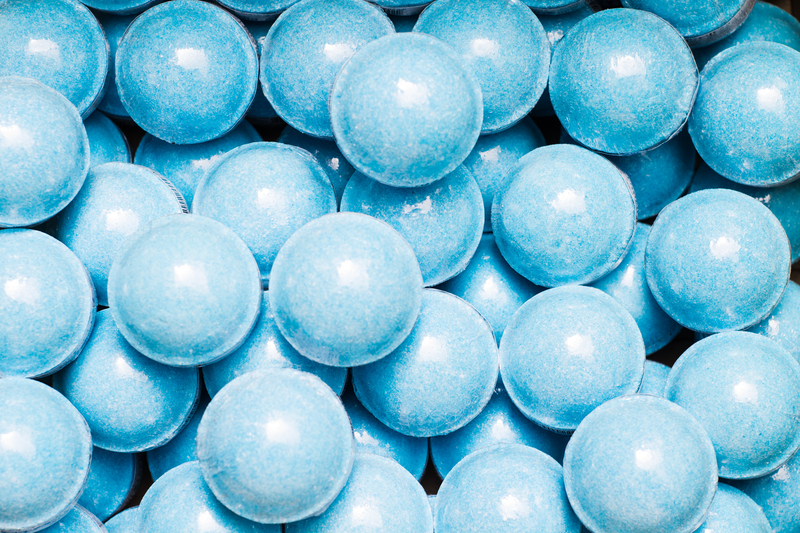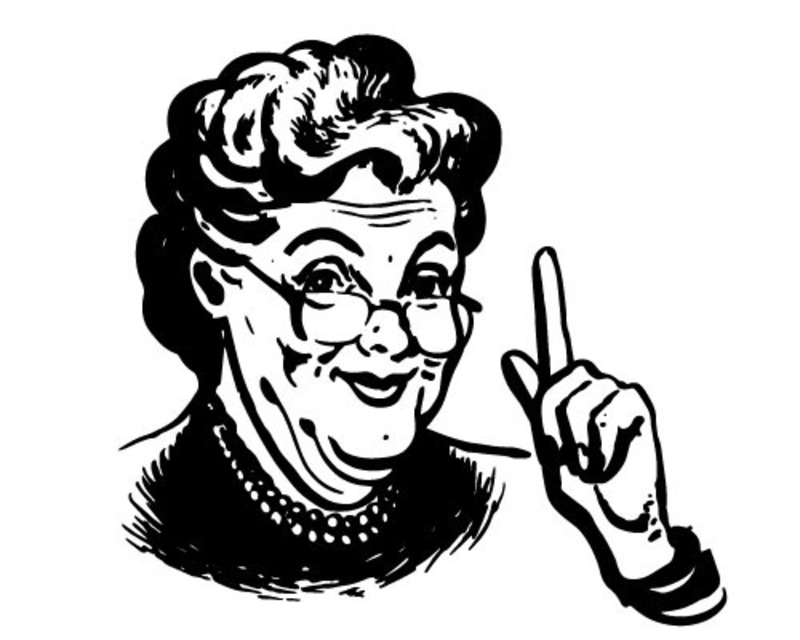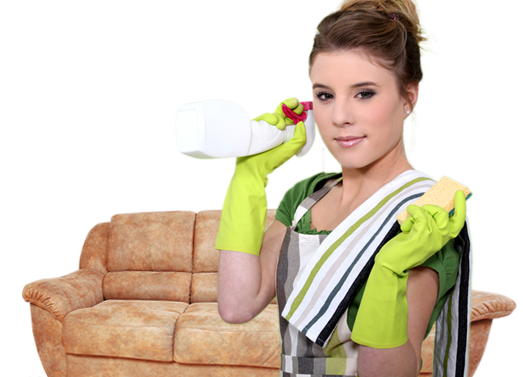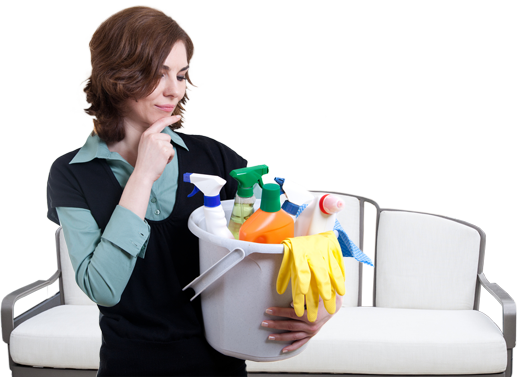Home Refresh: Essential Carpet and Hard Floor Cleaning
Posted on 07/06/2025
Home Refresh: Essential Carpet and Hard Floor Cleaning
Are you seeking a way to breathe new life into your living spaces? Begin with your carpets and hard floors! A home refresh centered on carpet and hard floor cleaning not only elevates your home's appearance but also promotes better hygiene and air quality. In this comprehensive guide, we cover the ins and outs of essential carpet cleaning and effective hard floor maintenance to keep your home sparkling, fresh, and inviting all year round.

Why Carpet and Floor Cleaning Matters
Your floors form the literal foundation of your home's style and comfort. Whether covered in soft, plush carpets or gleaming hardwood, floors endure daily use and accumulate dust, bacteria, allergens, and stains. Here's why regular floor and carpet cleaning should be at the heart of every home refresh:
- Improved indoor air quality: Clean floors reduce dust and allergens, making your home healthier.
- Enhanced aesthetic appeal: Revitalized carpets and spotless hard floors boost your home's beauty instantly.
- Increased lifespan of flooring: Proper maintenance prevents wear and tear, saving you from premature replacements.
- Safer environment: Clean floors reduce the risk of slips, falls, and contamination, especially in homes with children and pets.
- Odor control: Routine cleaning eliminates musty, unpleasant odors from carpets and flooring.
Pro Tip: Include cleaning tasks in your regular home maintenance schedule for lasting freshness and comfort!
Essential Carpet Cleaning Techniques
1. Vacuuming: The First Line of Defense
Routine vacuuming is the cornerstone of carpet maintenance. Aim to vacuum high-traffic areas at least twice a week and all areas at least weekly. Use a vacuum with a HEPA filter to trap fine dust and allergens.
- Move furniture regularly to reach hidden dirt and debris.
- Go slowly over each section for thorough cleaning.
- Replace or empty vacuum bags and filters as needed.
Tip: Use attachments for edges, corners, and upholstery to prevent dirt build-up in hard-to-reach spots.
2. Deep Cleaning: The Key to Lasting Freshness
Deep cleaning carpets twice a year, or more often for homes with pets and children, helps eliminate ingrained dirt and stubborn stains. Methods include:
- Hot water extraction (steam cleaning): Utilizes pressurized hot water and cleaning solutions for profound cleaning.
- Dry carpet cleaning: Involves specialized cleaning powders and minimal moisture for quick drying times.
- Foam encapsulation: Low-moisture method, trapping dirt in foam crystals for easy removal.
Note: Always check your carpet manufacturer's cleaning recommendations before starting.
3. Removing Common Carpet Stains
Dealing with carpet stains can seem overwhelming, but swift, appropriate action can prevent permanent marks. Remember these basic steps:
- Blot, don't rub: Gently blot spills with a clean, white cloth to lift the liquid instead of spreading the stain.
- Use the right cleaner: Tailor your cleaning solution to the spill (e.g., club soda for wine, dish soap for grease).
- Test before applying: Always test cleaning products on a small, inconspicuous area first to avoid discoloration.
- Repeat if necessary: Some stains may require multiple treatments for complete removal.
Persistent stains like ink, pet accidents, or red wine might need professional intervention for best results.
4. Deodorizing for a Fresh Finish
Carpets can harbor odors from pets, cooking, and daily life. To maintain a pleasantly scented home:
- Sprinkle baking soda on your carpet, let it sit for 15-30 minutes, then vacuum thoroughly.
- Use carpet-specific deodorizing sprays for rapid freshness between deep cleans.
- Ensure proper ventilation during and after cleaning to disperse lingering smells.
Best Practices for Hard Floor Cleaning
From classic hardwood to modern tile or laminates, hard floors are both beautiful and durable when properly maintained. Here's how to keep your surfaces in top shape:
1. Sweeping and Dusting
Daily sweeping or dust mopping is necessary to prevent grit and debris from scratching and dulling your hard floors. Microfiber mops trap dust more effectively than traditional brooms.
- Remove shoes at the door to minimize dirt tracked inside.
- Pay attention to corners and under furniture where dust accumulates.
- Replace mop heads regularly for maximum efficiency.
2. Damp Mopping: The Right Way
Proper damp mopping removes sticky residue and finer dust, but it's vital to use the right technique and cleaner for your floor type:
- Wood floors: Use a damp--never wet--mop with a gentle wood-approved cleaner. Avoid standing water, which can damage and warp wood.
- Tile and vinyl: Use a pH-neutral cleaner suited for your material. Mop with warm water and rinse for a streak-free shine.
- Laminates: Minimize water use to prevent swelling or warping. Use a barely damp mop and laminate-friendly cleaner.
Always dry floors thoroughly to prevent slips and moisture damage.
3. Tackling Tough Stains and Grout
Even with regular upkeep, hard floors can develop tough stains--especially between tiles. Here are targeted cleaning solutions:
- For tiles and grout: Use a soft brush and a mixture of baking soda and water or a store-bought grout cleaner. Avoid abrasive tools that scratch tiles.
- For scuffs on wood or laminate: Rub gently with a soft cloth and a commercial cleaner or a DIY blend (baking soda and water for laminate, specialized polish for wood).
- For stubborn marks on vinyl: Try a diluted vinegar solution and gentle scrubbing.
Tip: Test all cleaning solutions in an inconspicuous spot first.
4. Polishing and Protective Measures
Extend the gleam and longevity of your hard floors through regular polishing and protective strategies:
- Apply polish: Use hardwood or tile polish as recommended to restore shine and guard against scratches.
- Use rugs and mats: Place mats at doorways and area rugs under furniture in high-traffic zones.
- Felt pads: Attach felt pads to furniture legs to prevent scratching.
DIY vs. Professional Cleaning: Which is Best?
Both DIY methods and professional carpet and floor cleaning services have their place. Here's a breakdown to help you decide:
- DIY cleaning: Convenient and budget-friendly. Perfect for routine upkeep, minor stains, and deodorizing.
- Professional cleaning: Ideal for deep cleaning, difficult stains, and delicate floor types. Pros use specialized equipment and expertise for optimal results and preservation of warranty.
For a truly transformative home refresh, consider hiring professionals at least once a year, especially for wall-to-wall carpets or expansive hard floors.
Seasonal Home Refresh Checklist
To keep your home consistently inviting, follow this seasonal carpet and hard floor cleaning checklist:
- Spring: Deep clean carpets and floors after winter, address mud and salt residue, and open windows for ventilation.
- Summer: Maintain with frequent vacuuming and sweeping. Protect hard floors from humidity and sun fading.
- Autumn: Address increased foot traffic from outdoor activities; prep carpets and floors for the holiday season.
- Winter: Clean up water, salt, and grime; add extra mats at entrances to catch moisture and dirt.
Choosing the Right Cleaning Products and Tools
The right supplies make all the difference for a thorough home refresh. Here's what to consider when assembling your carpet and floor cleaning kit:
- Carpet-specific detergents: Look for low-sudsing, residue-free formulas safe for your specific carpet fibers.
- HEPA vacuum: A vacuum with a true HEPA filter captures allergens and fine dust better than standard models.
- Microfiber mops and cloths: Excellent for dust removal and minimizing water use on hardwood and laminate floors.
- PH-neutral cleaners: Essential for preventing damage and residue on most hard floor types.
Check manufacturer care labels and warranties before purchasing or using new products on your flooring surfaces.
Eco-Friendly Cleaning Alternatives
If you're eco-conscious or want to avoid harsh chemicals, there are several green options for a home refresh with essential carpet and hard floor cleaning:
- Baking soda: Natural deodorizer and mild abrasive.
- White vinegar: Effective for cleaning hard floors, but avoid it on stone or waxed surfaces.
- Lemon juice: Adds a fresh scent and helps cut grease.
- Essential oils: Provide natural fragrance without synthetic chemicals.
- Reusable mops and rags: Reduce waste and are easy to launder.
Always avoid harsh or acidic cleaners on sensitive floors like marble, limestone, or unsealed hardwood.

FAQs: Carpet and Hard Floor Cleaning
How often should I deep clean my carpets and floors?
- Carpets: Every 6-12 months, more frequently if you have pets, allergies, or high-traffic areas.
- Hard floors: As needed for deep cleaning, but weekly maintenance suffices for regular upkeep.
What's the best way to prevent stains and wear on carpets?
- Use area rugs and runners.
- Implement a shoe-free policy indoors.
- Address spills promptly and conduct regular vacuuming.
Is it safe to use steam mops on all hard floor types?
- No, always check manufacturer guidelines. Steam can damage unsealed wood, laminate, and some vinyl floors.
How do I eliminate odors from carpets naturally?
- Sprinkle with baking soda, let sit, then vacuum. Repeat as needed for persistent odors.
Final Thoughts: A Beautifully Refreshed Home Starts Underfoot
Bringing new life to your home begins with essential carpet cleaning and smart hard floor care. These strategies not only enhance your home's beauty, but also foster a cleaner, healthier, and more comfortable space for everyone. With the right tools, products, and methods, maintaining stunning floors is within everyone's reach. Make carpet and floor care a cornerstone of your home refresh routine for enduring results every season.
Remember: Start your next home refresh with a focus on floor and carpet cleaning and experience the remarkable difference for yourself!





